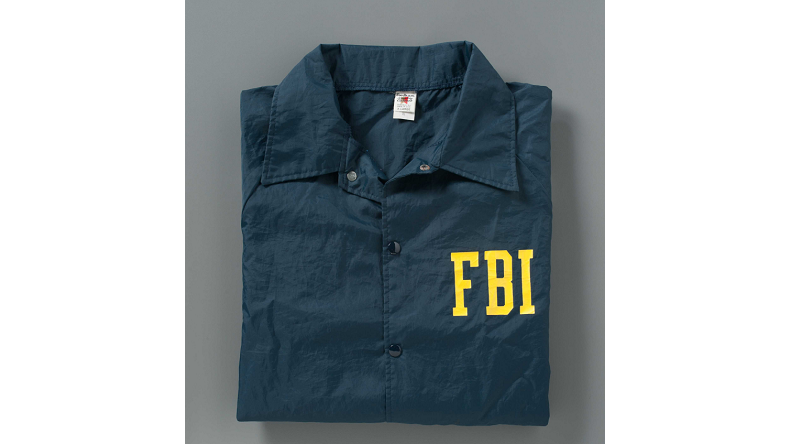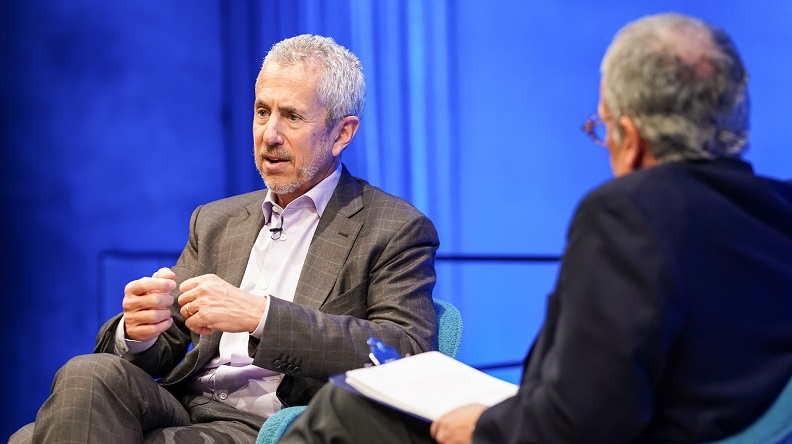John O’Neill’s FBI Jacket and Passport Embody His Enduring Fight Against Terrorism
John O’Neill’s FBI Jacket and Passport Embody His Enduring Fight Against Terrorism
John O’Neill was a leading figure in the FBI’s fight against terrorism at home and abroad in the years leading up to 9/11. He repeatedly sounded the alarm about the rising threat posed by organizations like al-Qaeda—and his life would ultimately be cut short in that group’s plot to attack the World Trade Center.
Born in Atlantic City in 1952, O’Neill would go on to fulfill a childhood dream of becoming an FBI agent, ultimately working at the agency for 31 years. He started as a fingerprint clerk and a tour guide in Washington, D.C., before becoming a special agent in the summer of 1976.
Over the next 15 years, he worked in such FBI areas as white-collar crime and foreign counterintelligence, eventually rising in the ranks to become a major player in the agency’s counterterrorism operations in the 1990s.
In 1995 he was appointed chief of the FBI’s counterterrorism division in Washington, D.C., and in 1997 he became special agent in charge of the FBI’s national security division in New York.
During his time in these roles, O’Neill investigated such cases the 1996 bombing of the Khobar Towers in Saudi Arabia, the 1998 bombings of American embassies in Kenya and Tanzania, and the 2000 bombing of the USS Cole in Yemen. O’Neill’s diplomatic passport, which he used to enter Yemen after the attack, is on view at the 9/11 Memorial & Museum exhibition Revealed: The Hunt for Bin Laden.
But it was O’Neill’s first terrorism case at the FBI—the February 26, 1993 bombing of the World Trade Center—that would influence his work for years to come. On the same day he started work at the FBI’s counterterrorism division, he got word that Ramzi Yousef, the leader behind the bombing plot, had been located in Pakistan. O’Neill was essential in coordinating Yousef’s arrest in the coming days.
O’Neill quickly developed a deep interest in transnational terrorist groups like al-Qaeda. It was during this time that he sounded the alarm about the growing threat of terrorism.
“A lot of these groups now have the capability and the support infrastructure in the United States to attack us here if they choose to do so,” O’Neill was quoted as saying in a May 1997 Associated Press story.
A month later he told an audience at the National Strategy Forum in Chicago: “I think interesting times lie ahead. Certainly, we as citizens will be challenged. I know the FBI will continue to be challenged in the years to come. Unfortunately, I cannot predict that no Americans will be injured or killed as a result of a terrorist attack.”
Through his self-education, O’Neill would become the FBI’s top terrorism expert and its authority on Osama bin Laden. His warnings about the terrorist threat to the U.S. homeland often fell on deaf ears.
O’Neill oversaw many sensitive operations during his time in New York, including deterring suspected plots ahead of the 2000 ball drop in Times Square. He was active in the New York Joint Terrorism Task Force and was in attendance when the task force marked its 20th anniversary atop the North Tower at Windows on the World in September 2000.
But after being passed over for promotions, and amid internal tensions at the bureau, O’Neill retired from the FBI on August 22, 2001. The next day he started a new job—chief of security at the World Trade Center. He was recruited to the role by New York–based security firm Kroll Associates, which had advised that security at the towers be revamped after the 1993 truck bombing.
In late August, just days before the attacks, O’Neill spoke with a friend, ABC News producer Chris Isham, about his new World Trade Center security job and the threats posed by terrorists to New York. Isham remembered jokingly telling O’Neill that “at least they’re not going to bomb it again,” to which O’Neill replied: “They’ll probably try to finish the job.”
Just two weeks into his new job, O’Neill was in his office on the 34th floor of the South Tower when a plane struck the North Tower. O’Neill evacuated and spoke with his adult son by cell phone, assuring him he was OK and assessing the situation. Around this time he was spotted around the towers by multiple people, including by filmmaker Jules Naudet, who captured O’Neill in the lobby of the North Tower before its collapse. He was also seen by longtime friend and fellow FBI agent, Wesley Wong, who last saw O’Neill heading towards the South Tower, likely to assist in the building’s evacuation and gather surveillance footage from the tower’s security offices.
O’Neill’s remains were recovered from the wreckage near Liberty Street on September 21. He was 49.

O’Neill’s navy-blue windbreaker jacket from the FBI is among his belongings in the Museum’s collection. It was found in his vehicle during the recovery effort at Ground Zero.
By 9/11 Memorial Staff
Previous Post
Danny Meyer Tells His 9/11 Story, Talks NYC Restaurant Culture in "New York Stories: Danny Meyer"

On Thursday, March 5, the 9/11 Memorial & Museum will host a public program featuring celebrated restaurateur Danny Meyer, who will reflect upon the impact of the 9/11 attacks on New York City and the restorative role of restaurants as sites of community and connection.
Next Post
Danny Meyer Reflects on 9/11, Restaurants as Sites of Community and Connection in Public Program

Last week, celebrated New York City restaurateur Danny Meyer participated in a public program at the 9/11 Memorial Museum as part of the “New York Stories” program series.